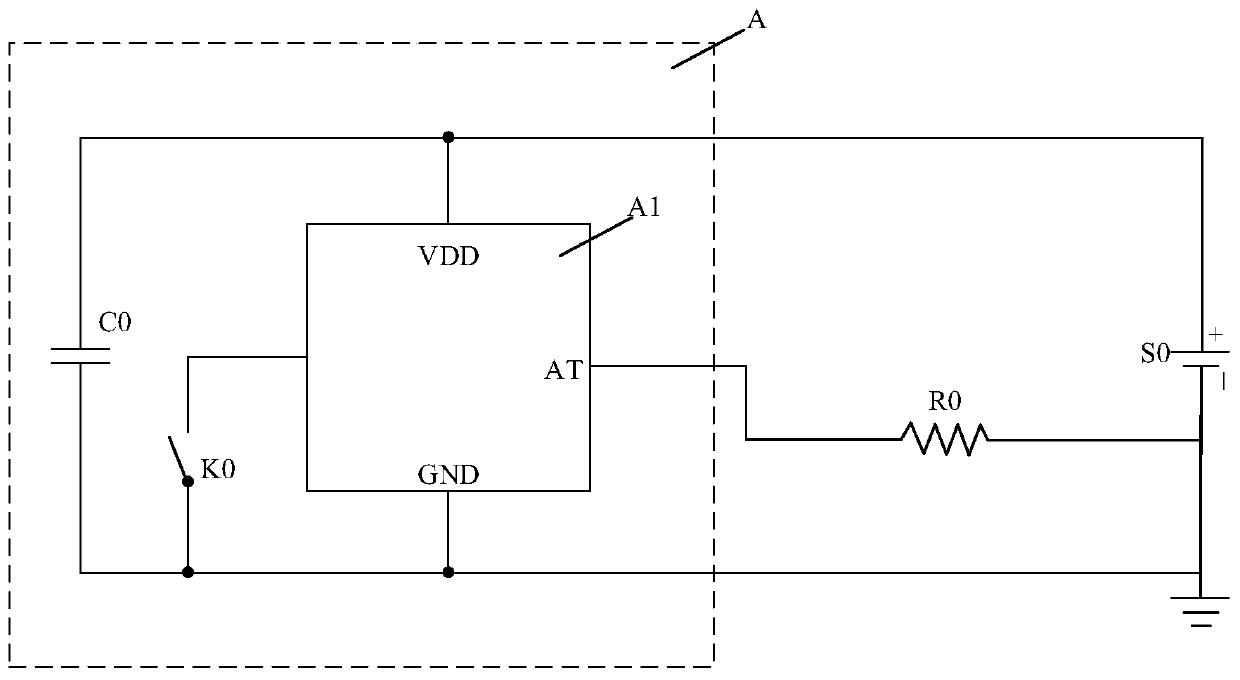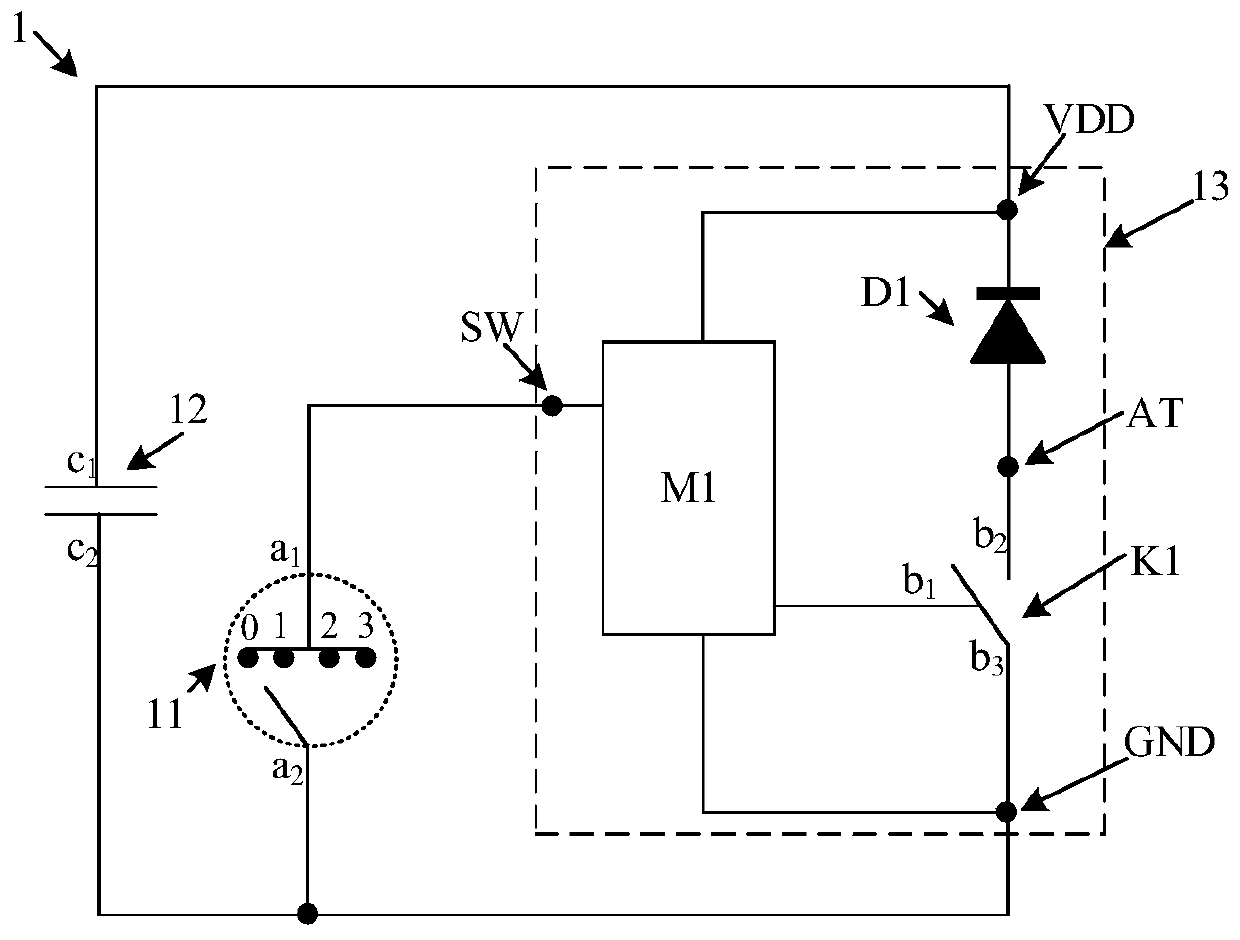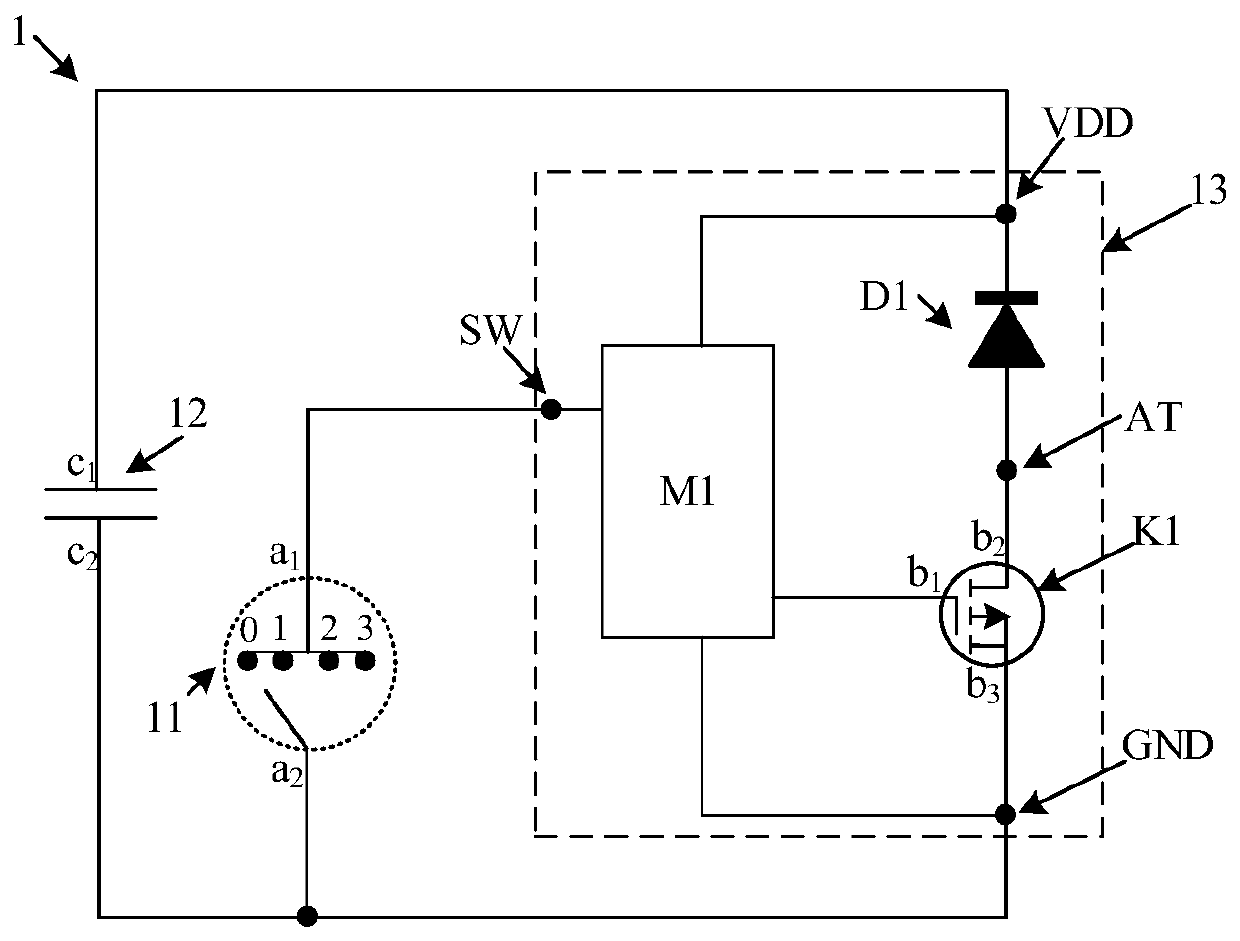Electronic atomization device and control circuit and method thereof
An electronic atomization device and control circuit technology, applied in electrical components, tobacco and other directions, can solve the problems of low reliability, many leads, and high production costs, and achieve the effects of reducing production costs, optimizing layout design, and avoiding failure risks.
- Summary
- Abstract
- Description
- Claims
- Application Information
AI Technical Summary
Problems solved by technology
Method used
Image
Examples
no. 1 approach
[0120] First embodiment: the switch tube K1 is a P-type MOS tube
[0121] The switch tube K1 in the control circuit 1 is a P-type MOS tube; wherein, the first end b of the switch tube (K1) 1 is the gate (marked with G), the second terminal b 2 is the source (marked with S), and the third terminal b 3 For the drain (marked with D).
[0122] Figure 9 A schematic diagram of a possible circuit connection of the electronic atomization device is shown when a P-type MOS tube is used in the control circuit provided by the present application. Such as Figure 9 As shown, the gate G of the switch K1 is connected to the logic controller M1. The source S of the switch tube K1 is connected to the anode of the power module 2 through the atomization pin AT of the control chip 13 and through the atomization module 3 . The drain D of the switch tube K1 is connected to the negative pole of the power module 2 through the ground pin GND of the control chip 13 . Also, the negative electr...
no. 2 approach
[0131] Second embodiment: the switching tube K1 is an N-type MOS tube
[0132] The switch tube K1 in the control circuit 1 is an N-type MOS tube; wherein, the first end b of the switch tube (K1) 1 is the gate G, the second terminal b 2 is the drain D, and the third terminal b 3 is the source S.
[0133] Figure 10 A schematic diagram of a possible circuit connection of the electronic atomization device is shown when an N-type MOS tube is used in the control circuit provided by this application. Such as Figure 10 As shown, the gate G of the switch K1 is connected to the logic controller M1. The drain D of the switch tube K1 is directly connected to the anode of the power module 2 via the atomization pin AT of the control chip 13 . The source S of the switch tube K1 is connected to the negative pole of the power module 2 through the ground pin GND of the control chip 13 and through the atomization module 3 . Also, the negative electrode of the power module 2 is grounde...
PUM
 Login to View More
Login to View More Abstract
Description
Claims
Application Information
 Login to View More
Login to View More - R&D
- Intellectual Property
- Life Sciences
- Materials
- Tech Scout
- Unparalleled Data Quality
- Higher Quality Content
- 60% Fewer Hallucinations
Browse by: Latest US Patents, China's latest patents, Technical Efficacy Thesaurus, Application Domain, Technology Topic, Popular Technical Reports.
© 2025 PatSnap. All rights reserved.Legal|Privacy policy|Modern Slavery Act Transparency Statement|Sitemap|About US| Contact US: help@patsnap.com



